Don't wanna be here? Send us removal request.
Text
Understanding Online Harassment: Insights from the #NoSnowflakes Study

In recent years, the discourse surrounding online harassment, particularly in university settings, has gained significant attention. The study titled "#NoSnowflakes: The toleration of harassment and an emergent gender-related digital divide, in a UK student online culture" sheds light on this pressing issue, challenging the stereotype of the so-called 'snowflake generation.
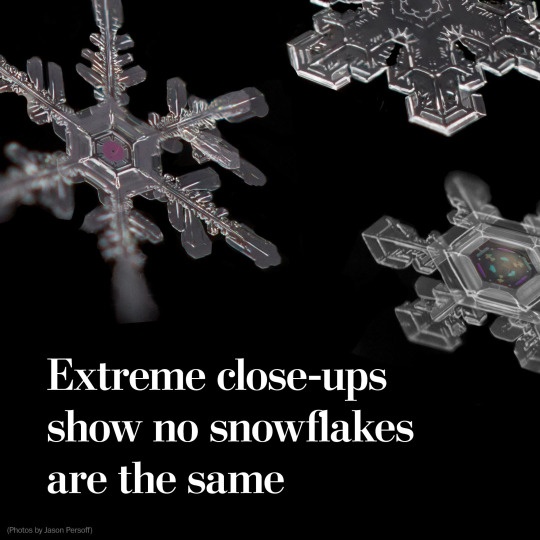
"The study conducted by Haslop et al. (2021) reveals a troubling normalization of harassment among students…" involved a comprehensive methodology, including an online survey distributed to 8,000 students, yielding a representative sample of 795 respondents. This quantitative data was complemented by qualitative interviews with 15 participants who had experienced online harassment. The findings revealed a troubling normalization of harassment among students, particularly affecting female and transgender individuals. For instance, the survey indicated that a notable percentage of female respondents had personally experienced abusive comments when expressing their opinions online, highlighting the pervasive nature of this issue.
One of the most striking aspects of the study is how it challenges the narrative that younger generations are overly sensitive or intolerant. Instead, it uncovers a culture where many students feel embarrassed or ashamed to report harassment, often viewing it as a part of their online experience. This reluctance to speak out is echoed in previous research, which found that victims of cyberbullying frequently grapple with emotions like fear and shame. The implications of these findings are profound. They suggest a need for universities to foster a more supportive environment that encourages reporting and addresses the underlying cultural attitudes towards online harassment. By shifting the focus from labeling students as 'snowflakes' to understanding their real experiences, we can begin to create safer digital spaces for all.
Reference: Haslop, C., O’Rourke, F., & Southern, R. (2021). #NoSnowflakes: The toleration of harassment and an emergent gender-related digital divide, in a UK student online culture. Convergence: The International Journal of Research into New Media Technologies, 27(5), 1418-1438. DOI: 10.1177/1354856521989270.
0 notes
Text
Celebrating Creativity: Melbourne International Games Week
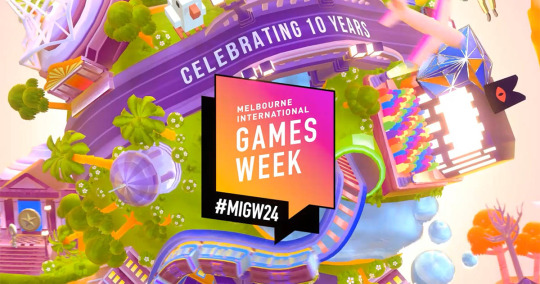
Melbourne International Games Week (MIGW) is a vibrant celebration of the gaming industry that takes place every November in the heart of Melbourne, Victoria. Curated by Creative Victoria, this week-long event serves as an umbrella for a multitude of activities that cater to both industry professionals and gaming enthusiasts alike.
At the forefront of MIGW is the Games Connect Asia Pacific (GCAP) conference, which provides a platform for professional developers to share insights, experiences, and practical knowledge. This industry-facing event fosters collaboration and networking, allowing attendees to connect with peers and learn from industry leaders. The conference is just the beginning, as MIGW also features the Australian Penny Arcade Expo (PAX Expo), a massive gathering that celebrates gaming culture through panels, exhibitions, and hands-on experiences.

One of the highlights of MIGW is the Freeplay Independent Games Festival, which showcases the creativity and innovation of indie developers. This festival emphasizes the importance of independent game development, providing a space for emerging talent to present their work and engage with the community. The festival not only highlights the artistic side of gaming but also encourages discussions around the future of the industry.
As the week progresses, the atmosphere becomes increasingly electric, culminating in unique events like the 'arty after party' in Richmond. This gathering is a celebration of the local game development community, where creators come together to share their passion for games in a relaxed and creative environment.
MIGW is more than just a series of events; it is a testament to Melbourne's thriving gaming culture, fostering connections, creativity, and collaboration among developers and gamers alike. Whether you're a seasoned professional or a curious newcomer, MIGW offers something for everyone, making it a must-attend event in the gaming calendar.
Reference
Keogh, Brendan. "The Melbourne indie game scenes: Value regimes in localized game development." In Independent Videogames: Cultures, Networks, Techniques and Politics, edited by P. Ruffino, 215-230. Milton: Taylor & Francis Group, 2020.
Vanderhoef, John. Passion, Pixels, and Profit: The New Creative Economy of Indie Game Production. Ann Arbor: University of Michigan Press, 2020.
0 notes
Text
The Impact of Snapchat Filters on Beauty Standards: A Double-Edged Sword

In the age of social media, platforms like Snapchat have revolutionized the way we perceive and present beauty. Snapchat's filters, particularly its face-altering Lenses, have become a cultural phenomenon, allowing users to enhance their appearance with just a tap. While these filters offer a fun and creative way to express oneself, they also raise significant concerns about the implications for beauty standards and self-image.

Research indicates that Snapchat filters often promote unattainable beauty ideals, emphasizing traits such as whiteness and sexualized femininity. This can lead to a narrow definition of beauty that excludes diverse representations, reinforcing harmful stereotypes. Users, particularly young women, may find themselves comparing their unfiltered selves to the idealized versions created by these filters, which can contribute to body image issues and eating disorders (Barker, 2020). The ephemeral nature of Snapchat, where images disappear after a short time, further complicates this dynamic, as users may feel pressured to present a perfect version of themselves, even if only temporarily.
Moreover, the popularity of these filters can create a cycle of validation and insecurity. Users may seek affirmation through likes and comments on their filtered selfies, leading to a reliance on external validation for self-worth. This phenomenon highlights the need for a critical examination of the messages being disseminated through such technologies.
As we navigate this digital landscape, it is essential to recognize the human influence and cultural biases behind these filters. By validating the concerns of users and encouraging a broader representation of beauty, we can foster a healthier relationship with self-image and promote inclusivity in the digital realm. Ultimately, while Snapchat filters can enhance creativity and self-expression, they also challenge us to reconsider the ideals we uphold in our pursuit of beauty.
Reference: Barker, J. (2020). Making-up on mobile: The pretty filters and ugly implications of Snapchat. Fashion, Style & Popular Culture, 210.
0 notes
Text
Understanding Slow Fashion: A Literature Review on Consumer Behavior

In recent years, the concept of "slow fashion" has gained traction as a sustainable alternative to the fast fashion industry, which is often criticized for its environmental impact and unethical labor practices. A comprehensive literature review conducted by Mariana Domingos and her colleagues delves into the nuances of consumer behavior within the slow fashion paradigm, shedding light on the motivations and attitudes that drive individuals towards more sustainable fashion choices(Domingos et al., 2021).
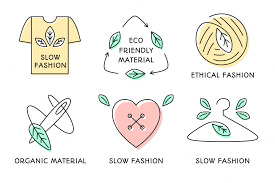
The review synthesizes findings from 25 relevant documents, categorizing them into various theoretical frameworks that support the slow fashion movement. It highlights that slow fashion is not merely a trend but a conscious lifestyle choice that emphasizes quality, sustainability, and ethical production. The authors found that key themes such as sustainability, design, and ethics frequently emerged in the literature, indicating that consumers are increasingly aware of the implications of their fashion choices.
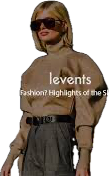
One of the significant insights from the review is the role of consumer education in promoting slow fashion. The authors argue that informed consumers are more likely to engage in sustainable practices, such as purchasing from ethical brands or opting for second-hand clothing. Additionally, the review underscores the importance of community and social influence, suggesting that consumers are motivated by a desire to align with like-minded individuals who prioritize sustainability.
The findings of this literature review have important implications for the fashion industry. Brands that embrace slow fashion principles can not only enhance their market appeal but also contribute to a more sustainable future. By understanding consumer behavior and the factors that drive sustainable choices, the industry can foster a shift towards more responsible consumption patterns, ultimately benefiting both the planet and society.
Reference:
Domingos, M.; Vale, V.T.; Faria, S. (2021). Slow Fashion Consumer Behavior: A Literature Review. Research Unit on Governance, Competitiveness and Public Policies (GOVCOPP), University of Aveiro.
0 notes
Text
Understanding Slow Fashion: A Literature Review on Consumer Behavior

In recent years, the concept of "slow fashion" has gained traction as a sustainable alternative to the fast fashion industry, which is often criticized for its environmental impact and ethical concerns. A literature review conducted by Mariana Domingos and her colleagues delves into the consumer behavior surrounding slow fashion, providing valuable insights into how individuals engage with this movement. The review synthesizes findings from 25 relevant documents, categorizing them into various theoretical frameworks. It highlights that slow fashion is not merely a trend but a significant shift in consumer mindset towards sustainability, ethics, and responsible consumption. The authors emphasize that slow fashion encourages consumers to prioritize quality over quantity, fostering a deeper connection with their clothing and the production processes behind them.
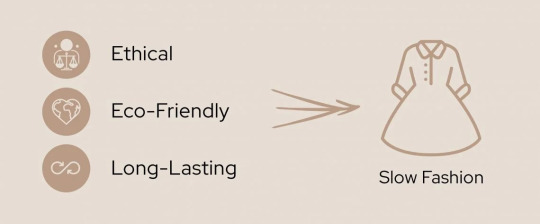
One of the key findings of the review is the identification of prominent themes within the literature, such as sustainability, design, and ethics. The analysis reveals that the term "slow fashion" frequently appears alongside discussions of sustainability, indicating that consumers are increasingly aware of the environmental implications of their fashion choices. Additionally, the review notes that the year 2017 marked a peak in publications related to slow fashion, suggesting a growing academic interest in this area. The authors employed a rigorous methodology, utilizing tools like PRISMA for article selection and bibliometric analysis to map keyword relationships. This comprehensive approach not only highlights the evolution of slow fashion in academic discourse but also underscores the need for further research into consumer motivations and behaviors.
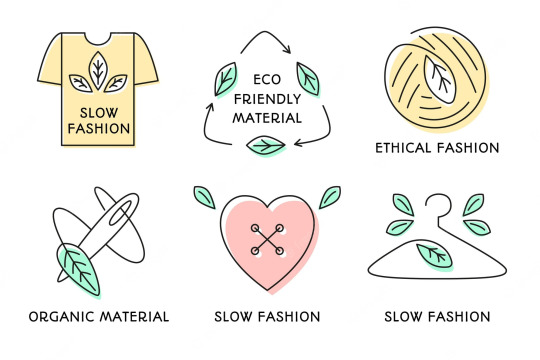
In conclusion, the literature review serves as a crucial resource for understanding the dynamics of slow fashion consumer behavior, paving the way for future studies that can further explore this important topic in the context of sustainability and ethical fashion practices.
0 notes
Text
The Evolution of Reality Television in the Age of Social Media
Reality television has undergone a significant transformation in the age of social media, reshaping how audiences engage with their favorite shows. Traditionally, reality TV was a passive viewing experience, where audiences consumed content without much interaction. However, the rise of platforms like Twitter, Facebook, and Instagram has turned viewers into active participants, fostering a culture of discussion and debate.
Social media allows fans to share their opinions, create memes, and engage in real-time conversations about episodes. This shift has led to the emergence of online communities where viewers can connect over shared interests, dissecting plotlines and character arcs. As noted by Mark Andrejevic (2008), some fans even follow shows through recaps alone, finding entertainment in the commentary rather than the original content itself .This phenomenon highlights the importance of narrative and humor in the digital age, as audiences seek out engaging content that resonates with their experiences.
Moreover, social media has introduced a new layer of interactivity. Reality TV stars often engage with fans directly, sharing behind-the-scenes content and personal insights that deepen the connection between the audience and the show. This interaction transforms the viewing experience, as fans feel a sense of ownership and investment in the narratives unfolding on their screens.
The playful nature of social media also contrasts with the more polished presentation of traditional reality TV. Platforms like YouTube and TikTok allow creators to adopt a more casual, spontaneous style, blurring the lines between professional and amateur content. This evolution reflects a broader trend in media consumption, where authenticity and relatability are increasingly valued.
In conclusion, the intersection of reality television and social media has created a dynamic landscape where audiences are no longer mere spectators but active participants in the storytelling process. This shift not only enhances viewer engagement but also redefines the very essence of reality TV in contemporary culture.
0 notes
Text
Embracing Self-Love: The Power of the #BodyPositive Movement on Tumblr

In a world dominated by unrealistic beauty standards, the #bodypositive movement on platforms like Tumblr has emerged as a beacon of hope and empowerment for many women. A recent study analyzing 300 selfies shared under this hashtag reveals the profound impact of self-acceptance and authenticity in self-presentation. The findings highlight that the majority of posts focus on themes of self-acceptance, with users openly discussing their struggles and triumphs in embracing their bodies (Reif et al., 2022)

The study found that while self-improvement was mentioned, it was often framed within the context of self-acceptance. This duality reflects a growing awareness among users that true beauty lies not in conforming to societal expectations but in celebrating one’s unique identity. Many blog descriptions and accompanying texts convey a positive and empowering tone, encouraging others to embrace their bodies, regardless of size or shape. For instance, users share their journeys of self-discovery, often expressing vulnerability and honesty about their experiences with body image (Cash, 2004).
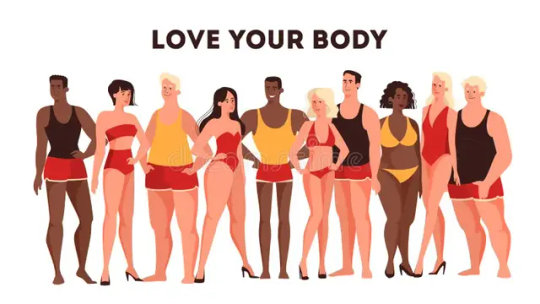
Moreover, the research indicates that the #bodypositive community fosters a supportive environment where women can connect and uplift one another. Although user reactions varied, the overwhelming majority of comments were positive, reinforcing the notion that this online space is dedicated to encouragement and acceptance (Cwynar-Horta, 2016). However, it is essential to acknowledge the potential risks of self-objectification, as some users may still face negative feedback or sexualization (Duffy & Hund, 2019).
As the landscape of social media continues to evolve, the #bodypositive movement serves as a reminder of the importance of self-love and acceptance. By sharing their stories and embracing their bodies, women are not only challenging societal norms but also creating a more inclusive and supportive community. This movement is a testament to the power of authenticity in fostering self-acceptance and promoting a healthier dialogue around body image (Tylka, 2012).
Reference:
Reif, A., Miller, I., & Taddicken, M. (2022). Love the Skin You’re In: Selfies and Tumblr Hashtag #bodypositive. Mass Communication and Society. https://doi.org/10.1080/15205436.2022.2138442 2
Cash, T. F. (2004). Body Image: A Handbook of Theory, Research, and Clinical Practice. Guilford Press.
Tylka, T. L. (2012). Positive Body Image: A Key to the Prevention of Eating Disorders. Eating Disorders, 20(2), 130-143.
Cwynar-Horta, J. (2016). The Body Positive: Feminism, Social Media, and the Politics of Representation. Feminist Media Studies, 16(6), 929-943.
Duffy, B. E., & Hund, E. (2019). Not Just a Pretty Face: The Impact of Social Media on Body Image and Self-Perception.
1 note
·
View note